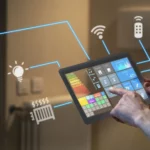Introduction
Uncover the future of education through smart education’s technological advancements. Explore how personalized learning, interactive content, and immersive technologies are reshaping traditional models. This blog delves into the essence of smart education, its components, benefits, challenges, and its journey towards a dynamic and inclusive learning environment.
The Essence of Smart Education
Discover how smart education leverages technology to foster critical thinking and active learning. Embrace innovative tools and strategies that engage learners in a personalized and interactive way.
Key Components of Smart Education
- Digital Content: Explore digital resources such as e-books, videos, simulations, and labs that make learning engaging and diverse.
- Personalized Learning: Witness how adaptive platforms tailor learning paths based on student data, ensuring individualized progress.
- Collaborative Tools: Experience the power of online forums, video conferencing, and collaborative platforms that promote teamwork.
- Gamification: Engage in gamified learning, integrating challenges and rewards to enhance motivation and participation.
- Virtual and Augmented Reality: Immerse yourself in experiential learning with VR and AR technologies, visualizing complex concepts.
Benefits of Smart Education
- Personalized Learning: See how tailored learning addresses individual needs and optimizes learning pace.
- Engagement and Motivation: Discover how interactive content and gamification foster a love for learning and boost retention.
- Accessibility: Embrace the accessibility of online platforms, making quality education available worldwide.
- Data-Driven Insights: Understand how analytics assist educators in adapting instruction and enhancing learning outcomes.
- Lifelong Learning: Explore how smart education equips learners with vital skills for ongoing personal and professional growth.
Challenges to Overcome
- Digital Divide: Addressing unequal technology access to ensure inclusivity in education.
- Teacher Training: Empowering educators with technology integration skills to enhance teaching.
- Quality Assurance: Ensuring the credibility and quality of online educational resources.
- Privacy and Security: Safeguarding student data and ensuring online safety.
The Path Forward
Smart education’s evolution continues through collaboration. Educators, policymakers, and technologists must unite to address challenges and refine strategies. A hybrid approach combining technology with traditional methods offers a balanced solution.
Conclusion
Smart education revolutionizes learning, enabling active participation in a technology-driven world. By embracing innovation, personalization, and inclusivity, smart education shapes a future where learning transcends physical boundaries. Experience education that’s dynamic, engaging, and tailored to the unique needs of each learner.




